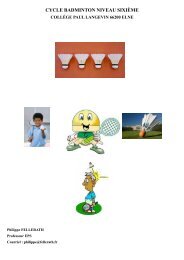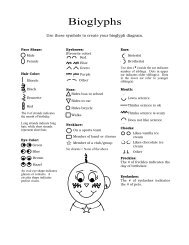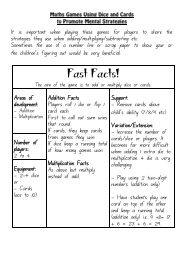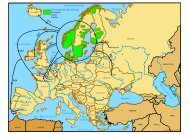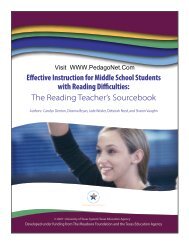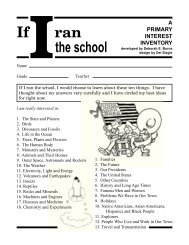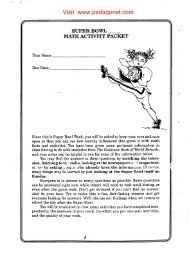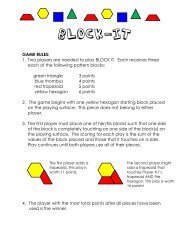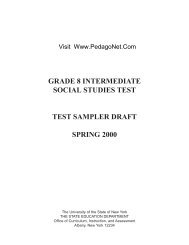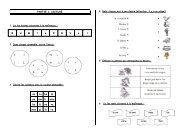You also want an ePaper? Increase the reach of your titles
YUMPU automatically turns print PDFs into web optimized ePapers that Google loves.
Mating: Locating a Host PlantLesson TwelveAges Primary <strong>and</strong> IntermediateObjective: Students learn observation skills <strong>and</strong> demonstrate what features butterflies use(color, odor, taste <strong>and</strong> appearance) to find a host plant (a larval food plant is called a hostplant).Materials:6 jams of the same color- These 6 can have different textures as long as they are all thesame color or roughly so. Some can even be the same flavor as long as the texture isdifferent <strong>and</strong> the colors are the same.2 small paper plates for each child1 index card for each childLots of paper towelsSuggested Approach:Preparation1. Set out two small paper plates <strong>and</strong> an index card for every child in the class.2. Assign a number to each of the six jams.3. Write the numbers for each of the six jams on one of the child’s plates.4. Place a small amount of each jam next to its number on the plate.5. Write the name of one of the jams on the second plate <strong>and</strong> place a small amount of thatjam on it.In Class6. Explain that once a butterfly has mated the female will carefully search for the correctfood plant for her eggs <strong>and</strong> future larvae. <strong>Butterflies</strong> are very picky about where theylay their eggs because each species of butterfly caterpillar is adapted to eat only specifickinds of plants. These plants are called “host plants.” The female butterfly instinctivelyrecognizes the leaf shape, color, odor, taste, texture, <strong>and</strong> appearance of her species’ hostplant.7. Write the ways a butterfly recognizes a host plant on the board.8. Tell the class that the labeled jam on their plate is their “host” jam. Tell them topretend that they are butterflies <strong>and</strong> that their baby caterpillars will only be able to eat thatjam. Students should find their “host” jam on the second paper plate.9. Tell them to first observe their “host” jam <strong>and</strong> to list the observations on their indexcard.10. Encourage students to use their senses to determine which mystery jam is their “host”jam.11. When they think they have figured out which of the 6 mystery jams is their “host” jamthey should write down the number of that jam on their index card.12. When everyone has had enough time to find their “host” jam read out the number <strong>and</strong>its corresponding jam.Florida Museum of Natural History http://www.flmnh.ufl.edu 44




